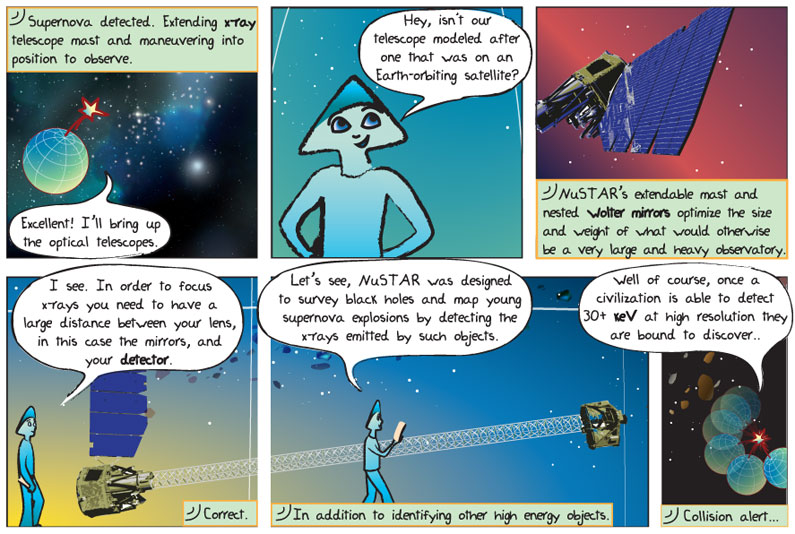
What does it mean?
X-ray – high energy electromagnetic radiation that is more powerful than visible and ultra-violet light but less powerful than gamma-rays. Because of their high energies and short wavelengths, x-rays can easily pass through “soft” materials and can be used to image the insides of things, like the human body.
Wolter mirrors – Special mirrors that are able to reflect x-rays. (Video)
Detector – a device, or devices, used to detect photons, or in some cases other particles like protons, electrons, etc.
keV – Kilo Electron Volts. The electron volt (eV) is a measurement of energy; it is the energy gained by an electron (or proton) dropping through a potential of one volt. This is a tiny amount of energy, appropriate for describing the energies of atomic and subatomic particles. To give an example, the energy of visible light photons is about 1 eV. Adding the prefix “kilo” means we are talking about one thousand electron volts (keV). It takes about 6 x 1015 keV to equal 1 joule.
In human speak please!
NuSTAR uses a special type of mirror that was invented by the German physicist Hans Wolter in 1952. X-rays are difficult to focus onto film. This is because if the x-rays hit the mirror or lens at a large angle, they will either be completely blocked (absorbed) or pass straight through the material. It’s a little bit like skipping stones on a lake, if you throw a rock directly at the water, the rock will sink immediately. But if you hit the surface of the lake at a glancing angle, the stone will “skip” across the surface. In order to focus x-rays, they must hit the mirrors at a shallow angle, so x-ray telescopes use a series of nested mirrors that focus by using several glancing reflections that only gradually bring the x-rays to a focus.
Is that all?
NuSTAR – CalTech’s NuSTAR site.
Multimedia? Yep, we’ve got it right here!
A short video about converting from electron-volts to Joule and back. Credit: Riaz Abdulla.
